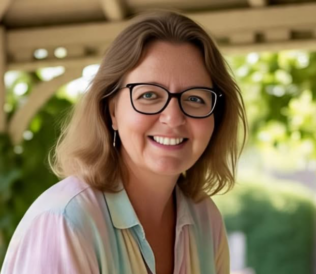Guest opinion: Lessons from our cohabitants

Photo supplied
Adam Johnston“Who’s a pretty bird?”
This was the typical refrain when my family and I would visit Cronk, the resident raven at the Ogden Nature Center. From his enclosure’s perch, Cronk would reply with a twist and turn of his head, inverting his view and adding his whimsy to the exchange. My kids, regular patrons and then volunteers at the nature preserve and its programs, knew the list of other exchanges with Cronk like a collection of well-told jokes shared between old friends. Cronk would even voice a few words and often called out a “hi” to those coming to visit.
The Nature Center put out a release at the end of last month that Cronk had died, and reading the news took all the air out of me. Seeing the outpouring of social media comments, I could tell I was in good company. This charismatic raven was a mainstay of the center and its bird rescue enclosures for as long as I have been visiting. More than being reliable, though, Cronk represented a sensibility. The natural world is conscious of us just as much as we are of it. Cronk played along, not just as a smart corvid, but as an empathetic, wise colleague and observer. That he was part of my kids’ lives made him all the more important.
It was a similar gut punch to learn about the passing of Jane Goodall a few days later. Goodall is well-regarded for her groundbreaking research with chimpanzees, recognizing that the traditionally distant study of our primate cousins only gets us so far. Her curiosity drew her among the chimps to observe and relate to them, and through this developed a level of trust that allowed her into their world. She documented their use of tools for the first time, something that seemed preposterous in nonhuman species only a few decades ago but is now understood to be commonplace.
More groundbreaking, though, was her sense of how we interact with the world of primates and other branches of the natural world. Everything we do is an active part of this planet for better and for worse, and we are tied to all the other facets of this earth. She gave hope not simply through inspiration and certainly not through her authority, but through her openness to all. She gave me faith in humanity because she embodied that faith herself.
Goodall’s later career focused on advocacy for the planet and all of us, including chimpanzees. Among countless pieces of footage of this is a clip of a rehabilitated chimp, Wounda, being released back into the forest. An enclosure’s door is lifted, and the chimp hesitantly makes her way out, eventually climbing atop the cage and embracing Goodall in a long hug before turning to leave. It’s a moment that evokes awe but also depicts love.
Sy Montgomery, an acclaimed writer invited by the Ogden School Foundation for its annual author event last week, emphasized that animals, along with the rest of this extensive natural world, aren’t simply other creatures to be studied. Sure, there’s extensive science revealed in her work about the all-too-brief existence of octopuses and the timelessly enduring lives of turtles. But Montgomery also makes it a point that these beings aren’t just others we live among, but part of the tapestry we live within. We are companions and co-travelers. Montgomery emphasizes that a dog, a pig, an octopus, a turtle are friends and co-contributors to this empathetic universe.
I had a hard time making sense of why the news of Cronk’s death had hit me so hard. But the reminders of Goodall and Montgomery came at the right time, helping me realize that Cronk’s loss was the loss of an old friend. We didn’t see each other often, but he was there to raise my kids, turn a smile and a sense of awe, and remind me that this world is one of wonder and compassion, if only we are curious and open enough to it.
Coming home tonight I was greeted by our effervescent dog, Nina, at the door, having anticipated my arrival before I’d even gotten to the driveway. “Who’s a good dog?” I asked as she curled over on her side for pets, her tail beating the floor like a kick drum. We all — me, Nina and Cronk perched and twisted somewhere above us — know the answer.
Adam Johnston is a professor of physics and director of the Center for Science and Mathematics Education at Weber State University, where he helps prepare future teachers and supports educators throughout Utah. This commentary is provided through a partnership with Weber State. The views expressed by the author do not necessarily represent the institutional values or positions of the university.


